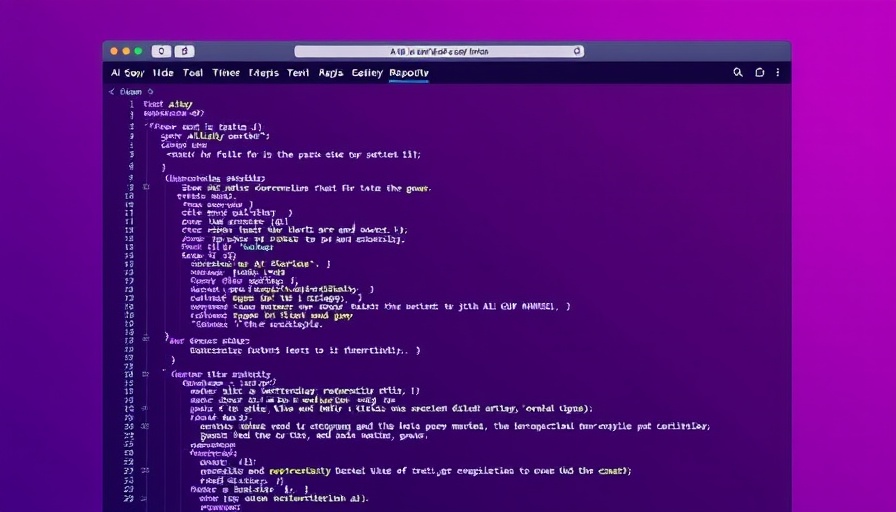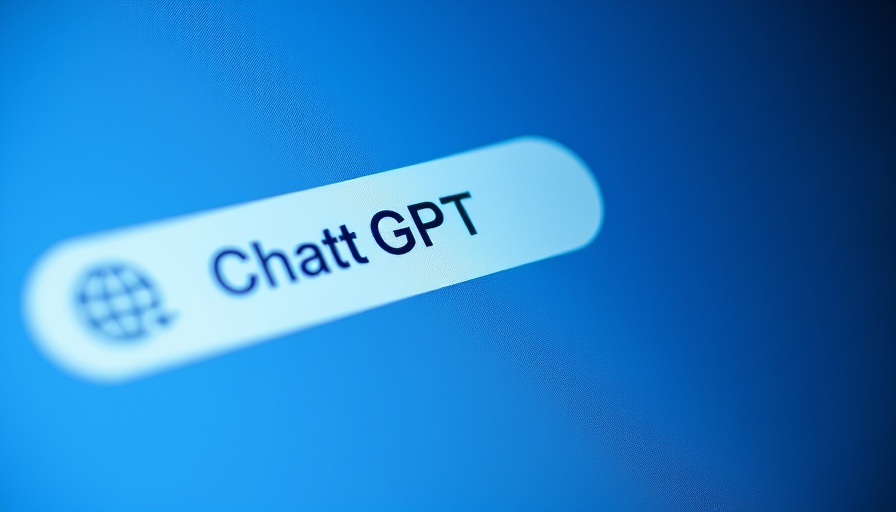
AI.gov's Ambitious Vision: A Transformative Initiative for Federal Operations
The recent accidental exposure of the Trump administration's AI blueprint via GitHub has sparked a keen interest in how artificial intelligence (AI) will revolutionize government operations. The leaked documents detail a major initiative, "AI.gov," which aims to integrate AI technologies across federal agencies, set to launch around the July 4th holiday. What does this mean for the future of public service and the roles of federal employees?
Understanding AI.gov: What’s on the Horizon?
At the core of the AI.gov initiative are three primary components: a government chatbot, an all-in-one API for AI integration, and a real-time monitoring console. The proposed chatbot could serve as a digital front desk for federal inquiries, significantly reducing response times for citizens. Meanwhile, the all-in-one API aims to provide a direct link for various government agencies to connect with leading AI models from OpenAI, Google, Anthropic, and Cohere. This infrastructure hints at a future where bureaucratic processes may be streamlined through intelligent automation.
The Driving Forces: Who Is Behind This Initiative?
Thomas Shedd, the former Tesla engineering manager who now leads the Technology Transformation Services (TTS), is at the heart of this bold strategy. Shedd's goal is to transform aging bureaucracy into a responsive, tech-savvy entity that mirrors Silicon Valley innovation. His "AI-first" philosophy suggests that he is determined to challenge traditional government norms by prioritizing artificial intelligence solutions to replace or streamline existing human tasks.
Risks and Challenges: Questions Arise in the AI Shift
Though the potential for a more efficient government is enticing, the rollout of such a significant AI program raises several concerns. Privacy and security issues are paramount, as the use of chatbots and API integrations could expose sensitive data. Moreover, as federal agencies increasingly rely on AI to fulfill roles left vacant by layoffs, one must question the long-term implications for employment within these sectors. Are we on the brink of a new age of efficiency, or are we risking the displacement of human workers?
The Future of AI in Government: Opportunities and Threats
The discussion around AI.gov reflects a broader trend toward automated solutions across various industries. Experts predict that by 2025, AI will play a central role in shaping the structures of organizations, both public and private. As technology continues to impact lives and workflows, the key will be striking a balance between leveraging AI for optimization while addressing the ethical questions that accompany its use.
Common Misconceptions: Debunking the Myths
Some may view AI as a panacea for all government inefficiencies. However, it's essential to recognize the challenges that accompany the deployment of such technologies. AI does not inherently understand context or human nuance, which can lead to oversights or miscommunications. Additionally, the notion that AI can entirely replace human jobs is a misconception; AI is best suited to augment human capabilities, not wholly replace them.
What Can Entrepreneurs Learn from AI.gov?
For busy entrepreneurs and professionals, the launch of AI.gov offers crucial insights into the importance of innovation and adaptability. By watching how governmental bodies implement these forward-thinking strategies, businesses can glean valuable lessons applicable to their own practices. Embracing technology entails not only adopting the latest tools but also considering how these changes can enhance operational efficiency and customer engagement.
Final Thoughts: Staying Ahead in the AI Race
The leaked AI.gov blueprint underscores the urgency for meaningful conversations around the impact of AI deployment in the public sector. As the technology continues to evolve, readers need to stay informed about emerging trends and tools. For those looking to remain competitive in 2025 and beyond, proactive engagement with AI advancements is crucial.
To further understand these profound changes and their implications for your own ventures, consider exploring the latest AI trends, tools, and insights. Doing so will equip you to navigate the future landscape with confidence.
 Add Row
Add Row  Add
Add 




 Add Row
Add Row  Add
Add 

Write A Comment